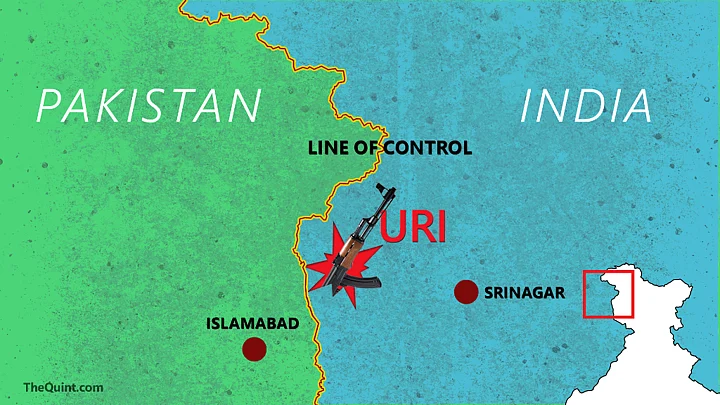The seven mountainous routes taken by the Indian special forces commandos to hit terrorist targets in Pakistan-occupied-Kashmir on 28 and 29 September were chosen because they were mine-free, according to senior government sources. This ensured the success of the operation in which the commandos are said to have crawled on their bellies to reach the targets.
Also Read: Exclusive: Why Modi Govt Won’t Release Videos of Surgical Strikes
Seven Different Routes Chosen After Brainstorming
The 100-odd commandos of the Indian Army took seven different routes to attack and destroy as many launching pads about two kilometres away from the Line of Control (LoC) in PoK. These routes were chosen after days of brainstorming of four premier intelligence agencies which gave crucial inputs for the success of the covert operation. These agencies were Intelligence Bureau (IB), Research and Analysis Wing (RAW), Military Intelligence (MI) and National Technical Research Organisation (NTRO).
It is not without significance that the entire operation went off virtually blemish-free and the commandos were able to complete the mission without any casualties, except for a stray incident towards the end of the operation when one commando was hit by a land mine and sustained a minor leg injury. This too was perhaps because that the commando apparently strayed from the given path in his excitement over the mission’s success.
Also Read: Exclusive: Surgical Strike in PoK’s Leepa Valley Especially Brutal

Video Footage Would Reveal Specific Routes
The sources said that two compelling reasons stopped the Narendra Modi government from releasing videos of the operation even as a clamour grew among opposition parties, especially the Congress, to make public photographic evidence of the surgical strike.
Releasing video footage of the operation will inevitably give away the specific routes the Indian commandos took. The entire operation covered an arc of about 250 square kilometres and the footage would reveal the positions of drones and spy satellites which provided key technical back-up.
Besides, the video footage captures virtually each and every movement of the Indian commandos. How the commandos moved, how they negotiated different geographical features of the mountainous terrain are matters of operational detail and hence top secret.
Also Read: Exclusive: Huge Loss of Weapons in Uri Attack, Intel Assets Safe

'Pakistan Has No Right to Demand Evidence'
It is not without significance that the entire operation went off without hitches and the commandos were able to accomplish the mission without any casualties, except for a stray incident in which a soldier sustained a minor leg injury in a land mine blast.
The considered opinion of the government is that Pakistan is an accused which has been waging a proxy war against India for the last three decades and, therefore, has no right to demand evidence against it.
It's a war-like situation which demands measures and responses fit for such extreme situations. Pakistan cannot lay claims to rights and privileges which every accused is entitled to under the Indian jurisprudence system like the Indian Evidence Act.
Also Read: Uri Attack Exclusive: Two Porters ‘Guided’ 4 Terrorists to Army HQ
Military Intentions Behind Demands for Evidence
The Pakistani political demand is actually a Trojan Horse which hides its actual military intentions of using the evidence shared by India to plug their loopholes and come with more terror attacks with much improved tactics. This has happened in the Pathankot case and terror attacks post-Pathankot betray better preparations from the Pakistani side after India shared Pathankot evidence with Pakistan.
This international diplomatic climate has encouraged India to ignore repeated Pakistani demands to come up with evidence of the surgical strikes.
(Rajeev Sharma is an independent journalist and strategic affairs analyst who tweets @Kishkindha. This is an opinion piece and the views expressed above are the author’s own. The Quint neither endorses nor is responsible for the same.)
(At The Quint, we are answerable only to our audience. Play an active role in shaping our journalism by becoming a member. Because the truth is worth it.)
